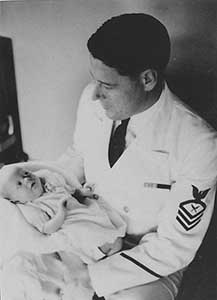
(This is Brian’s Dad Kenneth Kearns, from the only wartime picture he has. Note the one hash stripe, reflecting his pre-wartime USN service (1929-1933) as a radioman (RM, i.e., manual Morse operator) most of it in the USS California (BB-44), later sunk in the Pearl Harbor attack and resurrected. Also note the yeoman rating, as there weren’t any Intelligence Specialists (IS’s) in those days).
Brian thinks this photo was taken in June 1943, just after the birth of his older sister Valerie. She was a “Midway” baby, as after the battle of Midway people in the lovely islands figured the Japanese weren’t coming and they could start having children again. The War in the Pacific wasn’t about just military stuff, not by a long shot. It was about a collision of peoples, just as it is today.
My pal Brian’s Dad is the key link to a critical source of information that helped win a battle that helped win a war. Information is the key to the creation of actionable intelligence. Analysis is the process by which that information is sorted into actionable intelligence.
That was a critical matter, since each of the amphibious landings in the Pacific provided a horrific teaching point as the art of storming heavily defended islands from the sea was perfected. Well, improved. There is no perfection in military operations. No plan, as they say, survives first contact with the enem y, and the enemy always gets a vote .
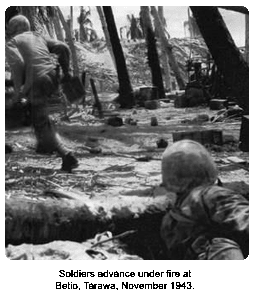
At Tarawa, for example, the Higgins landing craft made their way toward the landing beaches and then came to an abrupt halt on the protective reef. They had made the mistake of timing the landing to occur at low tide. The reef was 500 yards from the shore, and as soon as they hit it, the Japanese hit them with massive fire power, destroying many of the craft before the men could even disembark.
The Marines quickly realized that the enemy had not been neutralized. As the first wave waded through the water to the beach, only a few managed to get to the shore.
At Peleliu, the planners were told by military intelligence that the island was flat and featureless. Uncle Harold was there with the 1st Marines, carrying a flamethrower for that up-close and personal war with heavily defended bunkers. As it turned out, Peleliu featured dense growth that was nearly impenetrable. 1,500 men of The Old Breed perished with more than 6,000 wounded. At least they landed at high tide.
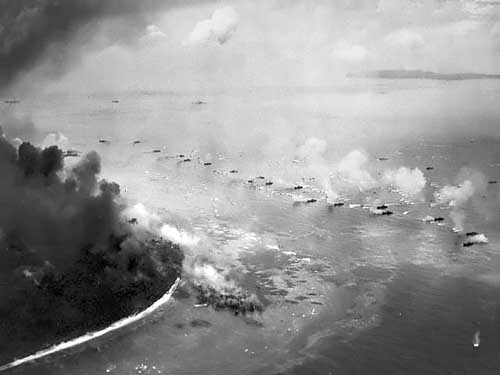
So, Jasper Holmes and JIC-POA had a real problem from the last teaching moment, which was that the planners did not know the black volcanic sand was going to limit the use of tanks on Iwo Jima. Brave men died because of it. A lot of men.
Jasper had an information problem and he knew it. He sent out a call to the 14th Naval District Intelligence Office to try to find someone who knew something about the nature of the beaches the dogfaces and Leathernecks were going to have to cross.
In the book, Jasper credits LCDR Keith Vanzant with finding the key, but he had it at least partly wrong.
Chief Kearns talked to Vanzant at the time and a lightbulb went on. He knew an 80-year old conchologist named Ditlev D. Thaanum, who collected seashells on beaches across the Pacific. As Jasper noted in his book “Double Edged Secrets,” Thaanum’s notes, maps and photographs were extremely valuable in the preparation of preliminary intelligence assessments on the landing beaches.
They saved lives. Continued investigation of Thaanum’s trove of material revealed the identity of his co-workers on the sea-shell collecting expeditions. A man named Daniel Boone Langford, 63, was located in Arizona. A spritely 63-year old, he proved to have an encyclopedic knowledge of the reefs and beaches of Okinawa. In fact, his command of the terrain was such that the commander of the 5th Amphibious Force hired him to ride the flagship Eldorado (AGC-11) for the invasion.
The commander? You guessed it. ADM Richmond Kelly “Terrible” Turner.
I have omitted the expletive I sometimes include in his name. Regardless of what you think about Turner’s machinations as the Director of Navy Plans before the war, or his role in scapegoating poor Admiral Kimmel about the attack on Pearl Harbor, his service as the Commander of the Amphib Force was commendable. People are complex things, aren’t they?
Anyway, the story of how this all came to be part of victory is interesting on several levels. The first is how wide a net one has to cast to try to gain understanding of tough problems. The second is about the ingenuity of that fabled class of sailor, the Navy Chief. And the third was about how the tides of conflict shifted because of what Jasper, and Mac and Eddie and Station Hypo accomplished.
It was enough to make the people of Hawaii confident enough that there was going to be a future that they would start having children again.
Kenneth Kearn’s contribution to Victory in the Pacific did not become common knowledge until after the publication of Jasper Holme’s book. Kenneth read it, and knew the real story.
I will let Chief Kearns tell you the story just as he told it to Jasper Holmes. Honestly, I feel like both of them are sitting here at the dining table with me.
This is how intelligence works. Sometimes. There always is going to be a teaching point in these things somewhere.
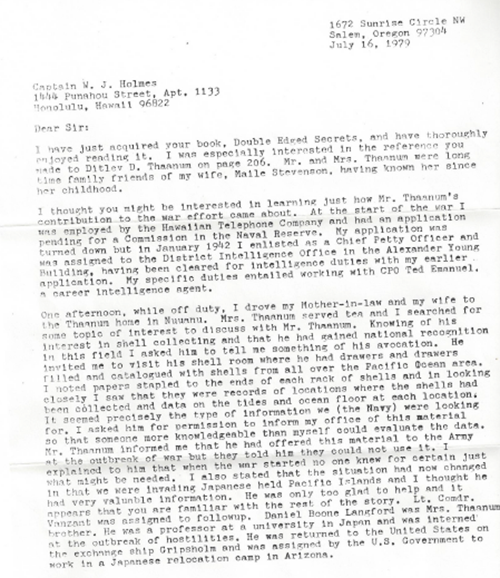
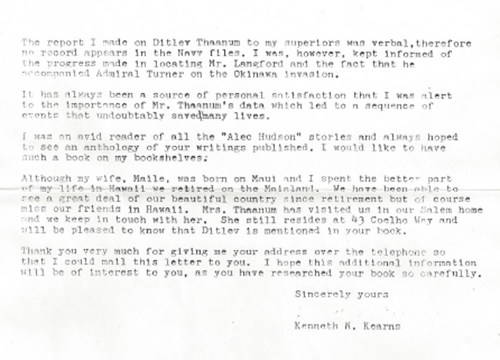
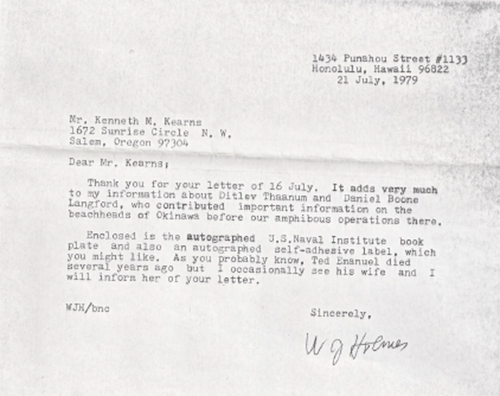
Copyright 2015 Vic Socotra
www.vicsocotra.com
Twitter: @jayare303
